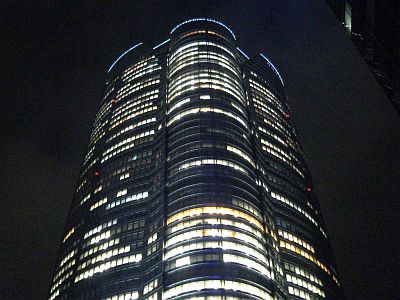In New York, how is the heating and hot water system using 'steam' working in active service?

by
In New York City, one of the world's largest cities, surprisingly, heating and hot water systems using 'steam' are in active operation. Untapped New York, which covers various topics in New York City, summarizes the question of how New York City's steam system works and what benefits it has.
How the New York City Steam System Works - Untapped New York
https://untapped cities.com/2021/07/09/new-york-city-steam-system/
In the city of New York City, you can see the sight of white steam blowing out from the chimney with white and orange stripes as shown in the picture below. This is part of the underground steam network system in New York City, and it is said that it also has the role of monitoring the status of the steam system while keeping the location of the steam leak as far away from vehicles and pedestrians as possible. About.

New York City was in the midst of a skyscraper boom at the time, and engineers were looking at efficient ways to heat skyscrapers. The steam heating system devised by Holly was suitable for heating high-rise buildings because steam naturally goes upward without requiring energy.
New York City introduced the steam system in 1882, the earliest major city in the United States, and has the largest steam system in the United States even at the time of writing the article. At the time of writing the article, 105 miles (about 169 km) of steam pipes are stretched underground in New York City, centering on Manhattan Island , Empire State Building , Chrysler Building , Grand Central Station , United Nations Headquarters . Buildings , Rockefeller Center , and more, we provide energy to more than 1,500 buildings.

Steam in New York City is made at steam plants in various private and public buildings and facilities, and at cogeneration plants that produce steam and electricity at the same time. Cogeneration plants generate both electricity and steam from one fuel source, so it is possible to produce energy very efficiently.
“Con Edison’s steam service has been the best source of energy compared to all other options available in the Manhattan building,” said Frank Cuomo, general manager of steam operations at
The steam supplied by Con Edison is 450 to 475 degrees Fahrenheit (about 232 to 246 degrees Celsius) and is used for building heating and hot water supply. In addition, some buildings use steam in large steam chillers to cool the air in the summer, and it is also used for dry cleaning, steam sterilization in hospitals, and humidification at the Museum of Modern Art in New York .
In addition to being a relatively clean energy source, steam also reduces the amount of electricity hospitals and other facilities use to maintain equipment, allowing power to be allocated to other critical equipment such as MRIs and life-saving equipment. In addition, since there are few facilities required for the building itself, installing a steam system is a great advantage when the available underground space is small or when a large basement is desired.
Below is a picture of the steam plant in the Empire State Building.

In Con Edison's steam plant, water that is as close to pure water as possible is heated to a specific pressure and temperature, and the steam produced flows through the system. 97% of the fuel used is natural gas, and it seems that fuel oil is used only in winter and in emergencies. In addition, the 105-mile long steam pipe network is all interconnected so that if one steam plant fails to produce, the steam produced by another steam plant can still be delivered to the customer's building. It is Although many of the steam systems are remotely monitored 24/7, the only way to actually maintain the steam pipes is to dig up the ground.
Revenue from the steam system is only a few percent of the total Con Edison, but we are not considering expanding the system at the time of writing the article. Instead, we are focusing on acquiring new customers within the scope of our steam pipe network.
“Con Edison’s steam systems have evolved to use coal, heavy oil, and natural gas as fuels,” Cuomo said. “We are committed to greening our systems with renewable fuels and technologies. We don't know what the fuel of the future will be, but whatever it is, we will buy it and use it to power our cities.'

by Phil Roeder
Related Posts:
in Science, Posted by log1h_ik







